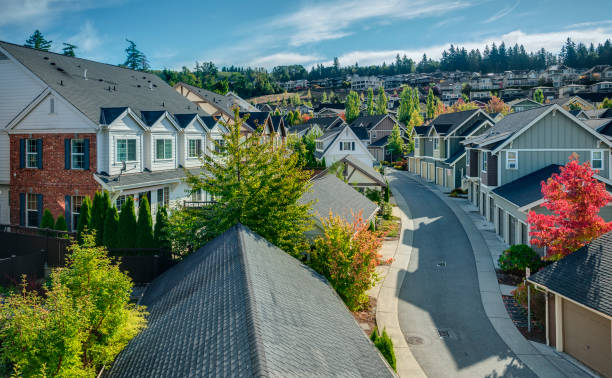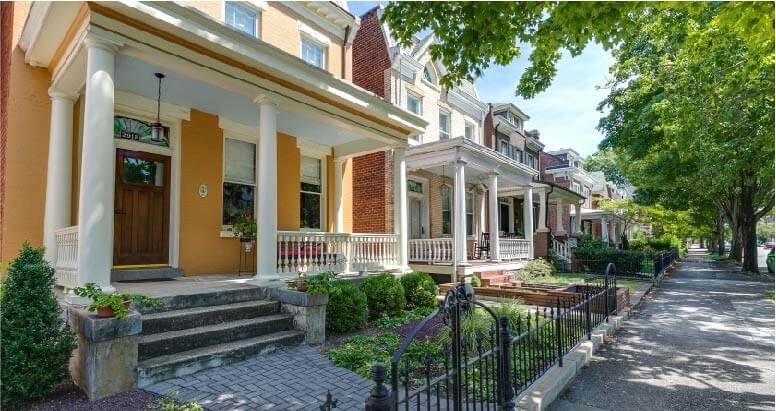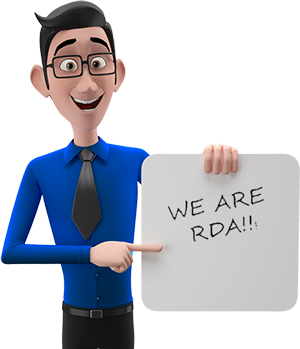HOA dispute resolution is a critical skill for board members to master. It plays a vital role in maintaining harmony within homeowners associations. Effective conflict management helps preserve property values, fosters a sense of community, and ensures smooth operations. Board members who excel at resolving disputes can prevent small issues from escalating into costly legal battles.
This article will explore key aspects of HOA dispute resolution. It will cover the role of board members, identifying root causes of conflicts, and implementing a step-by-step process. Additionally, it will discuss leveraging professional help, building a culture of cooperation, and measuring success in dispute resolution efforts. By following these tips, board members can handle conflicts like pros and create a more peaceful living environment for all residents.
The Role of Board Members in HOA Conflict Resolution
Board members play a crucial part in managing and maintaining harmony within homeowners associations. Their responsibilities extend beyond day-to-day operations to include conflict resolution, which is essential for preserving community well-being. Effective board members approach disputes with professionalism, fairness, and a commitment to finding solutions that benefit the entire community.
One of the primary duties of board members is to enforce rules and maintain common areas. However, this responsibility can sometimes lead to disagreements with homeowners. To handle these situations effectively, board members must approach homeowner issues and concerns with care and sensitivity. Careless handling of conflicts can quickly escalate tensions and create a hostile environment within the community.
While board members cannot always control how conflicts begin, their response can significantly influence the outcome. By resolving disputes effectively, they can promote collaboration, motivate new members to get involved, and set the stage for future success. This approach helps build trust and creates a positive atmosphere within the association.
Legal responsibilities
Board members have specific legal obligations they must uphold in their roles. These responsibilities include exercising due diligence, using caution, and demonstrating forethought before making decisions or taking actions. This duty of care extends to preventing conflicts of interest that may arise during their tenure.
A conflict of interest occurs when a board member, or someone close to them, stands to benefit directly or indirectly from a board decision or action. In such cases, board members must fully disclose all relevant information and recuse themselves from voting on the matter. This step helps avoid potential liability and maintains the integrity of the decision-making process.
For more significant or ongoing conflicts of interest, board members may need to consider resigning from their positions. Failure to disclose conflicts of interest intentionally can lead to serious consequences for the board member in question.
Ethical considerations
Ethical behavior is paramount for HOA board members. They must follow the association’s rules, make decisions that benefit the entire community, and promote transparency and fairness in all their actions. Ethical board members demonstrate integrity, take responsibility for their choices, and genuinely care about the needs of the community they serve.
To maintain ethical standards, board members should adhere to a Code of Professional Ethics. This code typically outlines expected behavior regarding integrity, objectivity, technical standards, and handling conflicts of interest. By understanding and following this code, board members can avoid situations that may compromise their ethical standing.
Transparency in financial matters is particularly crucial. Ethical board members maintain accurate records, conduct regular audits, and share clear financial reports with residents. This openness helps build trust and prevents suspicions of mismanagement or fraud.
Unethical behavior by board members can have severe consequences for the community. It can lead to higher HOA fees, budget shortfalls, and even embezzlement. Moreover, a lack of transparency can erode trust among residents, creating divisions within the community and making decision-making more challenging.
To address potential ethical issues, board members should encourage open communication and provide clear explanations for their actions. They should also be receptive to constructive suggestions from community members. By promoting a culture of ethical behavior and accountability, board members can help create a harmonious and thriving homeowners association.
Identifying the Root Causes of HOA Disputes
To effectively manage HOA dispute resolution, board members must first understand the underlying issues that lead to conflicts within the community. By identifying these root causes, they can develop strategies to address problems before they escalate into major disputes.
Common triggers
Several common triggers can spark disagreements within an HOA community. These include:
• Communication breakdown: Lack of clear communication between the board and homeowners often leads to misunderstandings and frustration. This can result in residents feeling uninformed or excluded from important decisions.
• Rule violations: When homeowners fail to comply with community regulations, such as those governing landscaping, parking, or noise levels, it can create tension among neighbors and with the board.
• Maintenance responsibilities: Disputes may arise over who is responsible for maintaining certain areas, such as lawns, fences, or shared amenities. Unclear boundaries between individual properties and common areas can exacerbate these issues.
• Financial matters: Disagreements over assessments, late fees, or the use of reserve funds can cause significant conflict. Homeowners may question how the association’s money is being spent or managed.
• Architectural changes: Conflicts often occur when homeowners modify their property without obtaining proper approval from the association’s architectural review committee. This can include issues with building additions, fence types, paint colors, or landscaping choices.
• Amenity usage: Improper use of community amenities, such as pools, gyms, or clubhouses, can lead to friction among residents. This may involve disputes over access, cleanliness, or noise levels.
Underlying issues
While these triggers are often the immediate cause of disputes, several underlying issues can contribute to ongoing conflicts within an HOA:
• Lack of transparency: When board members fail to provide clear explanations for their actions or decisions, it can erode trust among residents and create an atmosphere of suspicion.
• Inconsistent rule enforcement: Selective enforcement of rules or perceived bias in decision-making can lead to resentment and accusations of unfair treatment.
• Personality clashes: Sometimes, disputes arise simply because homeowners have different personalities or communication styles. These conflicts can be difficult to resolve but often serve as the root cause of other HOA disputes.
• Misunderstanding of roles and responsibilities: When homeowners or board members are unclear about their rights and obligations within the community, it can lead to confusion and conflict.
• Resistance to change: Some residents may oppose new policies or community improvements, leading to tension between those who want to maintain the status quo and those who advocate for change.
• Financial strain: Economic pressures on individual homeowners or the association itself can contribute to disputes over fees, assessments, or allocation of resources.
By recognizing these common triggers and underlying issues, board members can take proactive steps to address potential conflicts before they escalate. Implementing effective communication strategies, promoting transparency in decision-making, and fostering a culture of cooperation can help mitigate many of these root causes and improve overall HOA dispute resolution efforts.
Implementing a Step-by-Step Dispute Resolution Process
Implementing a structured approach to HOA dispute resolution is crucial for maintaining harmony within the community. By following a step-by-step process, board members can address conflicts efficiently and effectively, promoting transparency and fairness for all parties involved.
Initial communication
The first step in resolving disputes is to establish clear lines of communication. Board members should encourage homeowners to voice their concerns early on, preventing issues from escalating. When a dispute arises, it’s essential to:
• Draft a clear and concise email or letter to the HOA board or management company. • Clearly state the issue and reference relevant sections of the governing documents. • Outline any steps already taken to address the problem. • Propose a specific resolution or request a meeting to discuss the matter further.
When composing this initial communication, it’s important to maintain a professional tone. Avoid using emotional language or making personal attacks, even if feelings of frustration are present. The goal is to present oneself as a reasonable homeowner seeking a fair solution.
If a meeting is requested, suggest multiple dates and times to demonstrate initiative and make it easier for the board to respond positively. Following up within a reasonable timeframe (usually about a week) if no response is received shows persistence and can help get the board’s attention.
Escalation procedures
If initial communication efforts don’t yield results, it’s important to have a clear escalation process in place. This may involve:
• Scheduling a formal meeting with the board or management company. • Preparing thoroughly by organizing relevant documentation and anticipating potential questions or objections. • Considering bringing a neutral third party as a witness to the meeting.
During the meeting, it’s crucial to remain calm and focused on the facts. Board members should listen actively to all parties involved and be open to reasonable compromises. Taking notes or, with agreement from all parties, recording the meeting can help ensure accurate documentation of the discussion.
After the meeting, sending a follow-up email summarizing what was discussed and any agreements reached creates a record of the interaction and helps ensure everyone is on the same page.
If the dispute remains unresolved after these steps, alternative dispute resolution (ADR) methods such as mediation or arbitration may be necessary. Mediation involves a neutral third party helping facilitate a resolution, while arbitration involves an arbitrator making a binding decision.
By implementing this step-by-step process, HOA boards can demonstrate their commitment to fair and transparent conflict management. This approach not only helps resolve current disputes but also builds trust within the community, potentially preventing future conflicts from arising.
Leveraging Professional Help in Dispute Resolution
While board members play a crucial role in hoa dispute resolution, there are times when seeking professional assistance becomes necessary. Leveraging expert help can provide valuable insights, ensure legal compliance, and facilitate more effective conflict management within the community.
When to involve a property manager
Property managers can be invaluable assets in handling disputes within homeowners associations. Their experience and expertise in dealing with various community issues make them well-equipped to address conflicts effectively. Here are some situations where involving a property manager can be beneficial:
• Complex disputes: When conflicts involve multiple parties or intricate community rules, property managers can offer a neutral perspective and help navigate the complexities.
• Recurring issues: If certain types of disputes keep arising, property managers can identify patterns and suggest long-term solutions to prevent future occurrences.
• Communication breakdowns: Seasoned property managers know how to handle difficult residents and board members with a mix of firmness and tact. They can help restore open lines of communication and foster a more cooperative environment.
• Policy enforcement: Property managers can assist in consistently enforcing HOA policies, which is crucial for maintaining order and fairness within the community.
• Documentation and record-keeping: Professional managers can help maintain accurate records of disputes and resolutions, which can be valuable for future reference or legal purposes.
Consulting legal experts
There are instances when legal expertise becomes necessary to resolve hoa disputes effectively. Consulting with an HOA attorney can provide several benefits:
• Legal compliance: HOA attorneys possess comprehensive knowledge of state and local HOA laws, ensuring that all actions taken during dispute resolution comply with relevant regulations.
• Contract review: When disputes involve vendors or service providers, HOA lawyers can meticulously review contracts to determine if any breaches have occurred and negotiate solutions that meet the community’s needs.
• Alternative dispute resolution: Legal experts are skilled in techniques like mediation and negotiation, which can lead to faster and more cost-effective resolutions compared to lengthy court battles.
• Protecting homeowners’ rights: HOA attorneys act as watchdogs, ensuring that associations operate within the confines of the law and governing documents, preventing any abuse of power or unfair treatment.
• Handling complex cases: For disputes involving issues like discrimination, solar panel installation rights, or election fraud, specialized legal knowledge is crucial to navigate these intricate matters effectively.
It’s important to note that while property managers and legal experts can provide valuable assistance, they should not replace the board’s involvement in dispute resolution. Instead, these professionals should work in tandem with board members to achieve the best outcomes for the community.
By leveraging professional help when needed, HOAs can enhance their dispute resolution processes, promote transparency, and maintain a harmonious living environment for all residents. This approach not only helps resolve current conflicts but also builds trust and prevents future disputes from escalating.
Building a Culture of Cooperation in Your HOA
Creating a harmonious living environment within a homeowners association requires more than just enforcing rules and collecting dues. It involves fostering a culture of cooperation where residents feel valued, heard, and motivated to contribute positively to the community. By implementing strategies that promote open dialog and encourage compromise, HOA board members can significantly enhance the overall quality of life for all residents.
Promoting open dialog
Open communication serves as the foundation for building trust and understanding within an HOA community. To facilitate this, board members should:
• Conduct regular meetings and town halls: These gatherings provide a platform for residents to stay informed about community developments and voice their concerns. By hosting these events consistently, board members demonstrate their commitment to transparency and inclusivity.
• Encourage community members to share their thoughts: Actively soliciting feedback from residents through suggestion boxes, online surveys, or community forums can help board members gain valuable insights into the needs and desires of the community. This approach ensures that decisions are made with the best interests of all residents in mind.
• Organize community gatherings and social activities: Hosting events such as block parties, holiday celebrations, or community picnics creates opportunities for neighbors to connect on a personal level. These informal settings foster casual interactions, helping to build a sense of belonging and strengthening community bonds.
• Provide spaces for casual interactions: Creating communal areas like gardens, picnic spots, or shared amenities encourages spontaneous conversations among residents. These interactions can lead to better understanding and cooperation among community members.
Encouraging compromise
In any community, differences of opinion are inevitable. However, by promoting a culture of compromise, HOAs can navigate these challenges more effectively:
• Practice active listening: Board members should lead by example, demonstrating the importance of truly hearing and understanding different perspectives. This approach can help de-escalate conflicts and find common ground.
• Focus on community interests: When faced with disagreements, encourage all parties to consider the broader impact on the community. This shift in perspective can often lead to more collaborative solutions.
• Offer alternative dispute resolution methods: Providing access to mediation services can help resolve conflicts amicably without resorting to costly legal battles. These processes can lead to mutually beneficial outcomes and preserve relationships within the community.
• Be flexible and open to change: As community needs evolve, so should HOA policies and practices. Demonstrating a willingness to adapt and consider new ideas can foster a more dynamic and responsive community culture.
By implementing these strategies, HOA board members can create an environment where open dialog and compromise are valued. This approach not only helps in effective hoa dispute resolution but also contributes to a more cohesive and satisfied community. Remember, building a culture of cooperation is an ongoing process that requires dedication, patience, and a genuine commitment to the well-being of all residents.
Measuring Success: Evaluating Your Dispute Resolution Efforts
Evaluating the effectiveness of hoa dispute resolution strategies is crucial for maintaining a harmonious community. By assessing the success of conflict management efforts, board members can identify areas for improvement and refine their approach to handling disagreements.
Key performance indicators
To gage the success of dispute resolution efforts, HOAs should track several key performance indicators (KPIs). These metrics provide valuable insights into the effectiveness of conflict management strategies:
• Number of disputes resolved internally: This indicator measures the association’s ability to handle conflicts without external intervention. A higher percentage of internally resolved disputes suggests effective communication and mediation skills within the community.
• Time to resolution: Tracking the average time it takes to resolve disputes helps identify bottlenecks in the process. Faster resolutions generally indicate more efficient conflict management procedures.
• Recurrence rate: Monitoring how often similar disputes arise can highlight systemic issues that need addressing. A low recurrence rate suggests that root causes are being effectively identified and addressed.
• Community satisfaction: Regularly assessing residents’ satisfaction with the dispute resolution process provides insights into its perceived fairness and effectiveness.
• Cost savings: Comparing the expenses associated with internal resolution versus external mediation or legal action can demonstrate the financial benefits of effective conflict management.
By regularly measuring and analyzing these KPIs, HOA boards can identify trends, pinpoint areas for improvement, and make data-driven decisions to enhance their dispute resolution processes.
Gathering feedback
Collecting feedback from community members is essential for evaluating and improving hoa dispute resolution efforts. This process not only provides valuable insights but also demonstrates the board’s commitment to transparency and continuous improvement.
To gather meaningful feedback:
• Conduct surveys: Regularly distribute surveys to residents, asking about their experiences with the dispute resolution process. Include questions about satisfaction levels, perceived fairness, and suggestions for improvement.
• Hold open forums: Organize community meetings where residents can share their thoughts on conflict management procedures. These gatherings provide an opportunity for open dialog and can help identify common concerns.
• Encourage anonymous feedback: Provide channels for anonymous feedback, such as suggestion boxes or online forms. This approach allows residents to share honest opinions without fear of repercussions.
• Follow up after resolutions: Reach out to parties involved in resolved disputes to gather their perspectives on the process and outcome. This feedback can provide valuable insights for refining future approaches.
• Analyze complaints: Review any complaints received about the dispute resolution process itself. These can highlight specific areas that need attention or improvement.
By actively seeking and incorporating feedback, HOA boards can continuously refine their conflict management strategies, fostering a culture of open communication and collaboration within the community. This approach not only improves the effectiveness of dispute resolution efforts but also builds trust and credibility among residents, ultimately contributing to a more harmonious living environment.
Conclusion
Mastering HOA dispute resolution is crucial for board members to maintain harmony and protect property values. By implementing a structured approach, leveraging professional help when needed, and fostering a culture of cooperation, board members can handle conflicts effectively. This approach not only resolves current issues but also prevents future disputes from escalating.
To ensure ongoing success, it’s essential to evaluate dispute resolution efforts regularly. By tracking key performance indicators and gathering feedback from community members, HOA boards can refine their strategies and build trust within the community. In the end, effective HOA dispute resolution leads to a more peaceful and satisfying living environment for all residents.
FAQs
Q: What are some strategies for handling difficult HOA board members?
A: If you’re facing challenges with difficult HOA board members, consider several approaches:
- Remain silent and observe initially, to understand the broader context.
- Use the open forum to address the board publicly.
- Write letters to express your concerns formally.
- Explore internal dispute resolution mechanisms within your HOA.
- Look into alternative dispute resolution options such as mediation.
- Consider running for a board position yourself to effect change from within.
- If necessary, initiate a recall of the board or report issues to state regulatory bodies.
Q: How can conflicts with an HOA be resolved?
A: To resolve conflicts with your HOA, start with effective communication, providing documents or evidence to support your position. If direct communication doesn’t resolve the issue, alternative dispute resolution methods like mediation and arbitration may be beneficial.
Related Articles:
- HOA Board Members: Fostering Positive Relationships
“Tips on fostering positive relationships among HOA board members.”
- HOA Violations: Consequences and How to Contest Them
“Learn about HOA violations and how to contest them.”
- HOA Code of Conduct: Legal Implications for Board Members
“Understand the legal implications of the HOA code of conduct.”






